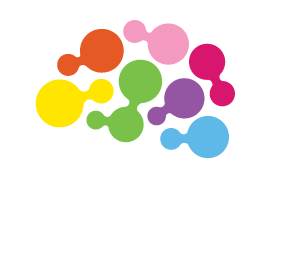Using Colouring Stencils, Drawing, Provocations and different Strategies
Post from old website dated 02/07/2019.
What practices can you see in your environment? Are they rigid or flexible? Do they support or hinder learning for children? For example, are they structured or play-based learning, closed or open-ended, teacher-directed or child lead and child-focused, restricted or endless possibilities of learning

Examples in Practice
Look at the following two examples, what do you see in practice in your room or at your service when completing creative experiences?
Example 1
Enter the room with closed-ended experiences and you see a wall that has 20 octopus stencils coloured in. Envisage a parent coming in and saying “Tommy which one is yours?” Tommy points to one and as he runs off mum says “That is great Tommy” Mum starts worrying internally about Tommy’s abilities as she doesn’t think his looks as good as everyone else’s. (I cringe as I recall practices I have seen where educators literally holding wrists and saying “Mummy wants you to do one” (Mummy is now seen negatively) Adults creating this environment because they believe it’s about the product and doesn’t understand about the importance of the process or that creative, thinking and problem-solving skills don’t just happen in doing ’art’.
Example 2
Then enter another room Educator says to colleagues I noticed yesterday that Sally enjoyed drawing flowers and talking about how she planted them with her Nanny on the weekend. I decided to pick some flowers from my garden to invite Sally to draw if she likes. Dad comes in and sees the different pictures on the wall and Sally takes Dad over to the wall and proudly shows him her drawing of the flowers she drew today. She initiates a conversation with her father about the different names of the flowers she drew today and then recalling the ones she planted with Nanny.

There are different reasons why people may create structured creative environments which may include;
- Their image of a teacher based on how they learned and it worked for them
- Not open to new ways
- Misunderstand intentional teaching
- No current in new theories and research of how children learn,, what strategies and environment support and enhance learning
- Believe that children learn best through being told what to do
- They believe it is a better way for children to learn to follow directions.
- Believe the teacher is the sponge and the child is the tap and they will soak up the knowledge. (Of which most of the water drains out)
- Being creatures of habit, that don’t feel comfortable with change
- Culture practices—they learned this way from their teacher and look at them now there are fine.
If people believe this it can be hard to change these perspectives merely through conversation so I do the following exercise with adults to give them a new perspective through the eyes of a child who may be directed in a closed environment in order to gain more empathy and understanding. For many I see the light bulb go off. For others, it takes time to change their values and behaviors, and they sometimes need support in how to set up the environment to make them look more inviting, aesthetically pleasing, and of interest. Pinterest is a good place to set up ideas and inspiration.
We all have different perspectives – let’s not hinder them.
I often hear educators say, “It’s too hard this is what families want, and they won’t enrol their child unless they know they are completing stencils, artwork, and/or homework.” Perhaps trying to change families’ perspective through doing the following exercise with them. Brainstorm and reflect other ways to learn from others and gain perspective.
I created a book for a client and one side (partly closed ended-makes me cringe) and the other side gives a new perspective. On one side is a colouring in with the letter of the alphabet repeated with lines for them to practice their writing and a colouring in relation to the letter of the alphabet. Then on the other side of the paper (open-ended), there is a couple of sentences at the top of the page with strategies for the parent to educate their child in a play-based environment through everyday routines and still supporting the child’s literacy and numeracy, but in more play-based approach. For example, at dinner time take this as an opportunity to use numeracy terminology and talk to your child about fractions and counting perhaps what is on their plate or on the table. “Would you like one or two potatoes?” Then give information on different strategies such as not asking closed-ended questions where the child feels they are being tested and instead use open-ended questions.
Overall Instructions
- The following are two exercises to do with adults.
- Complete the structured exercise first and then after they have completed this ask all adults what did they learn from this.
- Then complete the second exercise the open-ended experience and ask educators what did they learn from this.
- Then through comparing the two educators can see the different perspectives of how the environment (resources and strategies) can support or hinder learning outcomes. Can also link this to mandates, research, and theories such as the National Quality Standards and the Early Years Learning Framework and how this meets or doesn’t meet these.
- Pose questions on the strengths and areas to improve in relation to your services program and the opportunities available for play-based learning.
Exercise 1 – Closed Ended Environment
- Print out a stencil for all participants. I try and choose a stencil that has very small parts so that an adult can gain more of a child’s perspective in this experience. Another option could be to pick something gender or cultural-specific stencils and discuss associated limited learning if not guided appropriately.
- Very large crayons. I have seen services have two centimetre crayons available and a limited choice of colours and very blunt pencils. To create this same environment and learning for adults I recreate this environment for them through the bad choice of materials such as limiting their colours and out giving them choices or giving them materials that make them frustrated such as not being able to colour in small parts of the picture with a large crayon so they can see the frustration children may experience. Then discuss the non-importance of learning to colour between the lines. I find that people start to whinge and say I want that one and I say no listen and do as you are told. I then create more upset by taking the pencil off one adult or telling them to give it to the child next to them because they need to wait it is not their turn (later talking about when children are developmentally ready to share).
- I line the adults up near the table at the start of the experience and I take my time setting up the experience and I ask them to line up and wait. They start talking so I limit that talking and continue to tell them how they should be behaving and they are not sitting down till they are all quiet and in two beautiful straight lines. They start to laugh so I tell them to stop laughing and state you have already told repeatedly to be quiet, why are you not listening? I have limited conversation and when I do it’s a top-down approach with some praise.
- With limited engagement, I take colouring ins and Blutac them on the wall in straight lines

Exercise 2—Open-Ended Environment
- Give adults a plain piece of white paper each.
- Provide a variety of coloured sharp pencils and more than one of the same colour.
- Start conversations with each adult and ask what do they enjoy doing in their own time and extend the conversation to ask them more open-ended questions to learn even more about them as you naturally build the relationship in a positive manner.
- Depending on where you are doing this experience sets up an aesthetically pleasing and inviting area. Such as some toy animals from the room or some flowers in a vase from the garden. Then talk about how you have hypothetically set it up to their interests after discussion with you.
- Invite them to draw by asking would you like to draw a picture of what we have been talking about?
- Using words of encouragement to talk about their artwork or to see further information. “Would you like to tell me about your drawing”
- Talk with the adults and ask them would they like to display their artwork or take it home and then listen and follow their preference respectfully.

